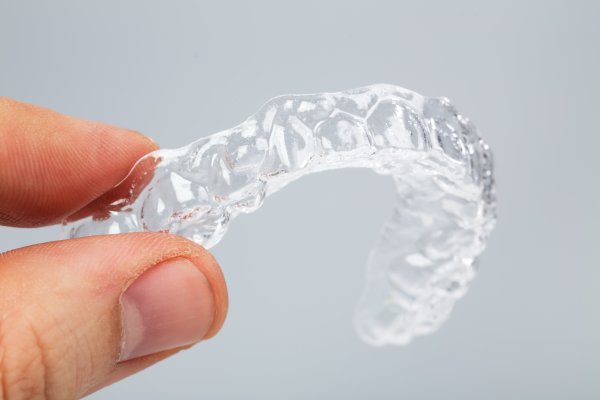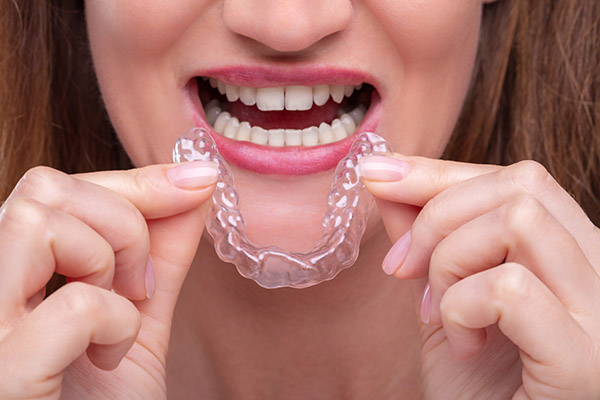Invisalign Versus Braces: How They Differ

Many people are opting for alternatives to traditional metal braces for correcting misaligned teeth, such as Invisalign®. This clear plastic orthodontic aligner, which resembles a retainer, straightens crooked teeth and closes tooth gaps without the need for metal wiring or other hardware. Individuals who want to correct such dental issues may want to understand the differences between Invisalign® and metal braces before making the best choice for their oral health.
About metal braces
Braces have long been the traditional manner for straightening crooked or misaligned teeth. Many individuals require and wear these braces, including the following:
- Children under 12
- Teens
- Young adults under age 30
Some middle-aged dental patients have opted for metal braces as well, especially to correct oral issues that occur later on in life.
Metal braces are a system of bands and brackets put in place by a dentist or orthodontist. Exams and x-rays may be performed to determine how long the braces must be worn to achieve the optimum effect. These braces are not removable by the wearer, but adjustments can be made by a dentist if any of the brackets or wires are uncomfortable.
The pros and cons of metal braces
Metal braces have several advantages and drawbacks dental patients may want to consider before choosing between this traditional hardware and Invisalign®. Metal braces tend to work quickly and can straighten crooked teeth in a matter of months, depending on the severity of the problem. Ceramic braces give users an alternative to metal brackets and are not as visible as the metal style.
Traditional braces also have some drawbacks. Pain and discomfort are common for many users, especially during the first few months of use. Brushing and flossing can also be problematic, as the wires and brackets can make reaching certain spots difficult. Children and teens may feel self-conscious about wearing metal braces or fear facing ridicule from peers.
About Invisalign®
Unlike metal braces, Invisalign® aligners are made of plastic and are designed to fit each individual wearer. During the initial dental consultation, patients will likely undergo a routine exam and x-rays may be taken. The dental team will then make a mold of the mouth so Invisalign® fits comfortably.
Once the aligner is ready, a dental professional may provide patients with aftercare and advice on when to wear the device and when it is safe to remove it. Depending on the misalignment of the teeth, it may take up to 18 months for correction to occur. The aligner is then changed out every 14 days to fit the new shape of the shifting teeth.
The pros and cons of Invisalign®
One of the main advantages of using this plastic aligner is that it is almost invisible when worn. Alignment and the closure of tooth gaps may also happen more quickly than with metal braces, which reduces treatment time. They are also comfortable and can be removed when users want to brush and floss without interference from the aligner.
Invisalign® may be more costly than traditional braces. However, cost can vary widely depending how long the device must be worn and the condition of a user’s teeth before the treatment begins. This constant switching of aligners may also result in frequent trips to the dentist.
Conclusion
Deciding between metal braces and Invisalign can be difficult. However, learning the facts about both may help those with crooked teeth make the most informed choice possible.
Request an appointment here: https://www.texasstarsmiles.com or call Texas Star Smiles & Fastbraces at (254) 237-1342 for an appointment in our Killeen office.
Check out what others are saying about our services on Yelp: Read our Yelp reviews.
Recent Posts
Clear aligners are comfortable, and they can give you a beautiful, healthy smile. Aligners have become increasingly popular due to their convenience. Many patients like that the dental appliances are removable. Clear aligners are also virtually invisible and allow people to achieve a straight smile discreetly. Keep reading to learn more about why aligners are…
A dentist will recommend Invisalign® if your dental alignment is mild to moderate. This system needs responsible patients because the care and changing of the aligners will depend on them. Knowing how this system works can help prepare you for your treatment period. Here are the details about how Invisalign aligns teeth.Assessing the teeth with…
Underbites are serious issues, but clear aligners can often fix them. If left untreated, underbites can cause serious oral health concerns. Treating the problem is vital to getting a better smile. Keep reading to learn more about the role of clear aligners.Aligners can work for some kinds of underbites. A severe underbite might need more…
To keep your clear aligners in tip-top shape, you must take good care of them. It is also crucial to keep your mouth and teeth healthy and clean. Frequently visiting your dentist can help prevent many problems, such as tooth decay, during clear aligner treatment. Read on to find out why you still need dental…


